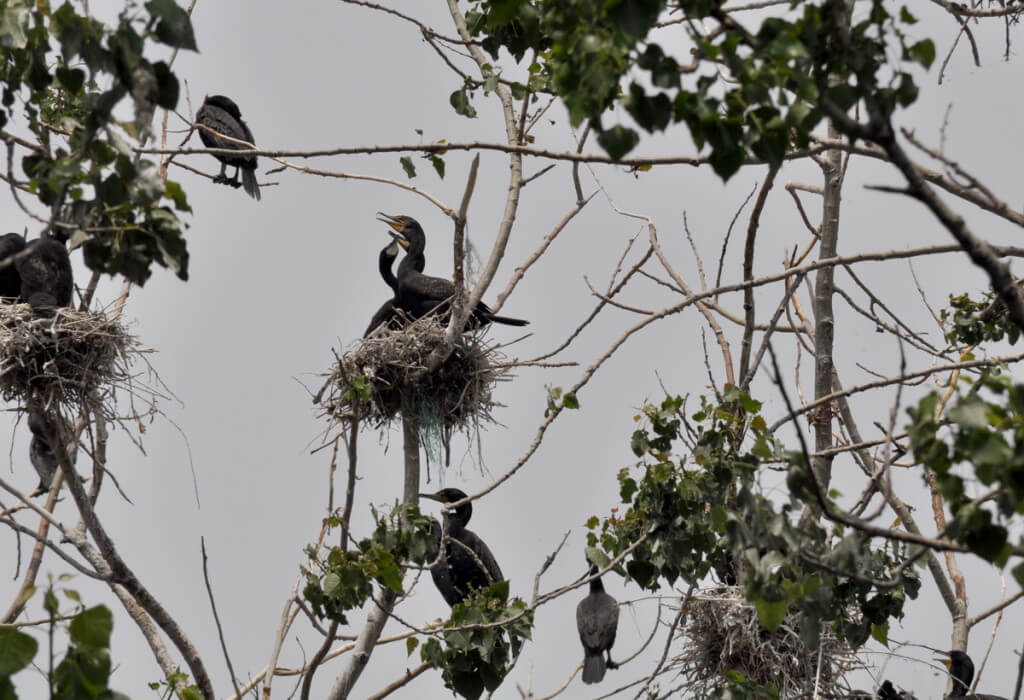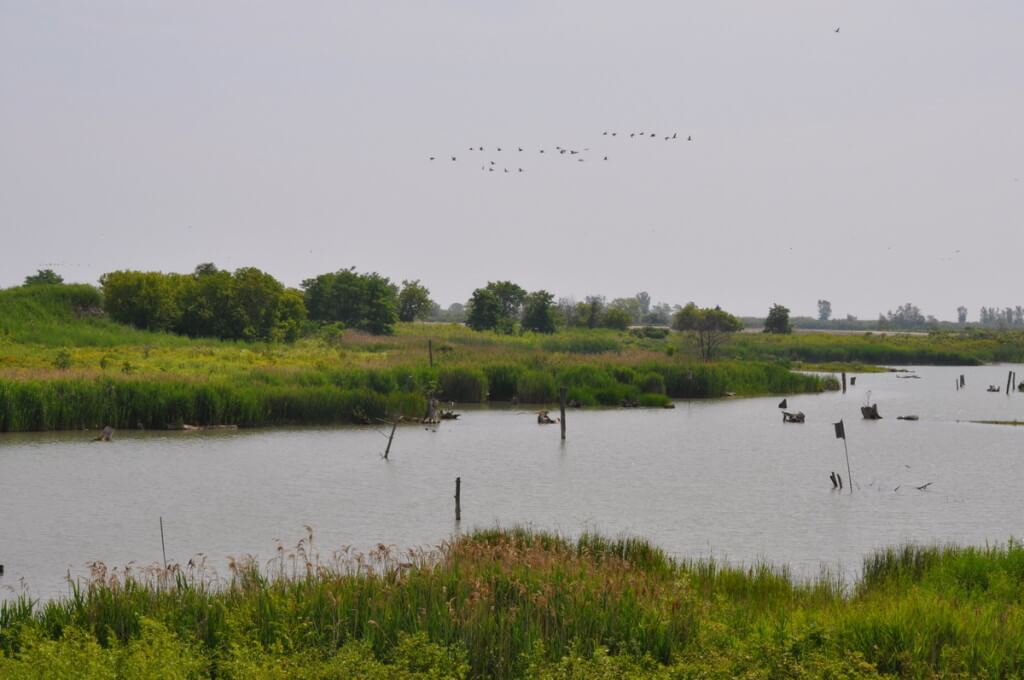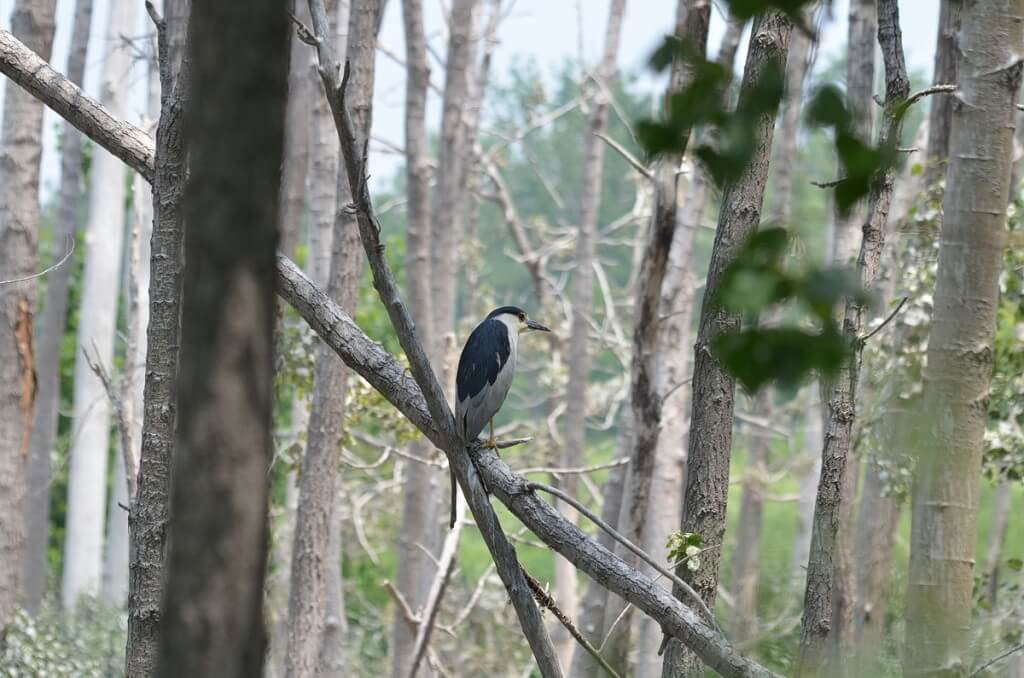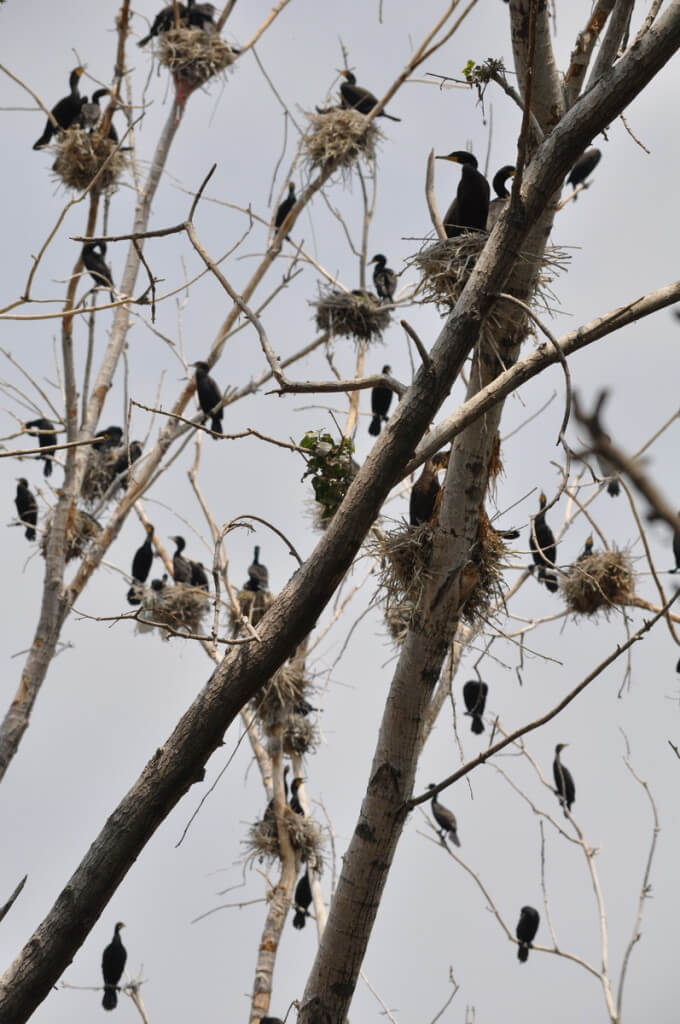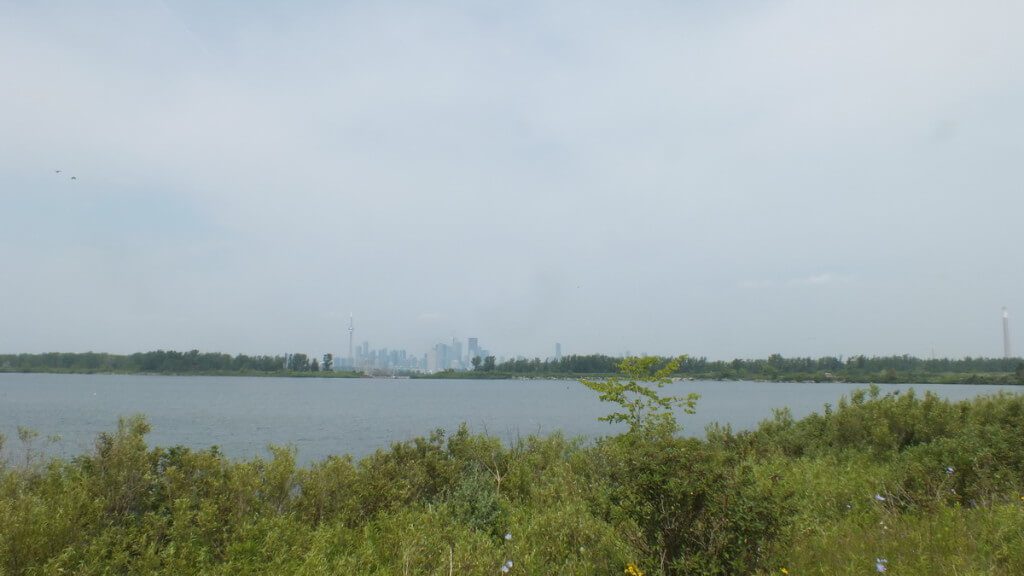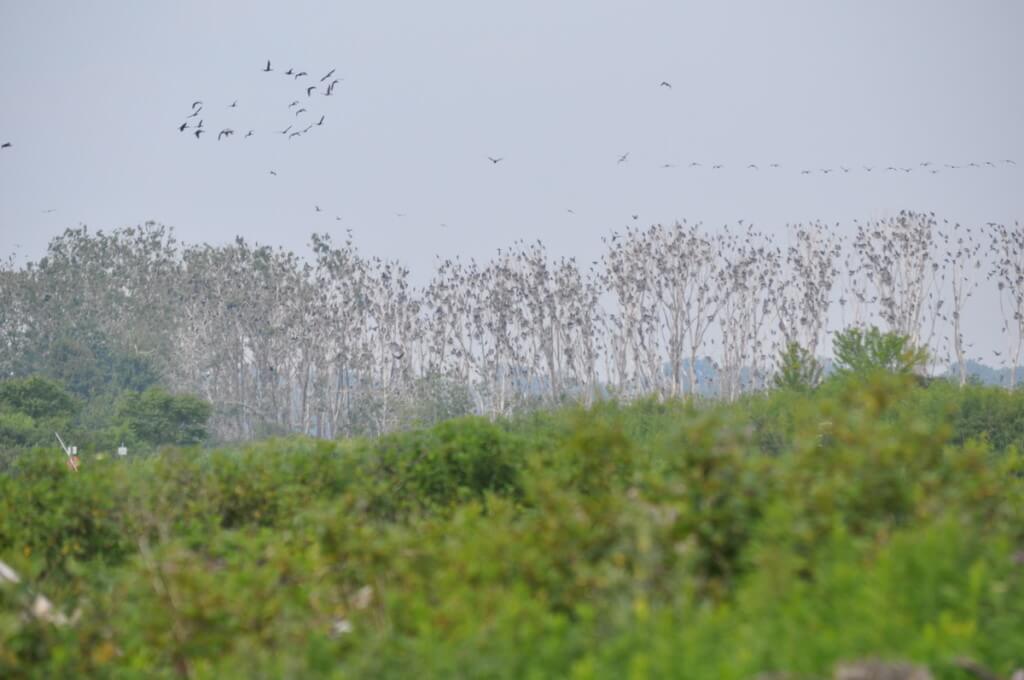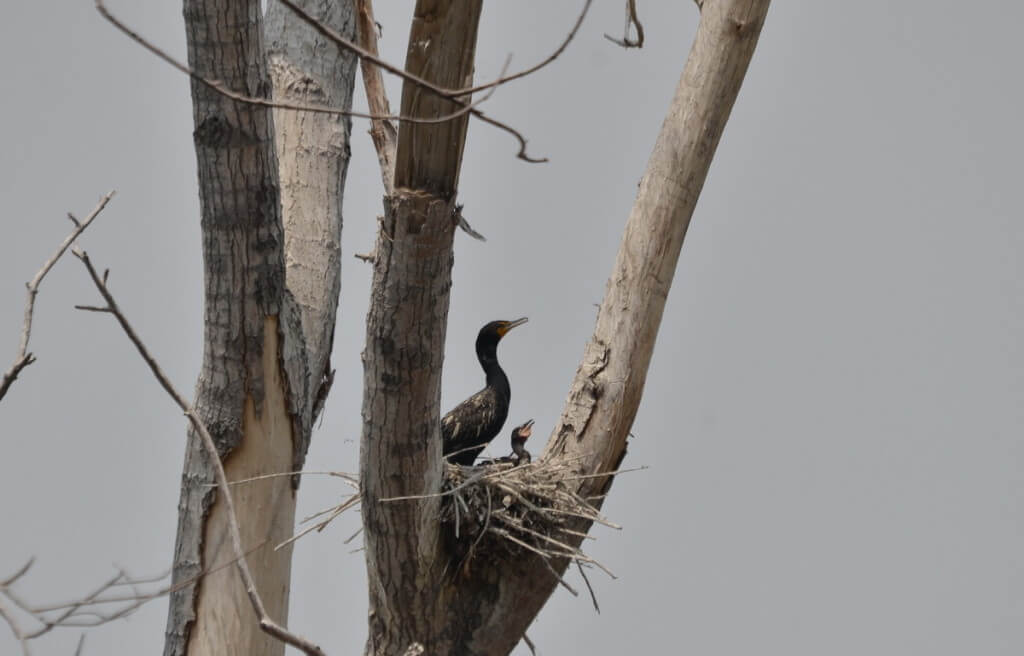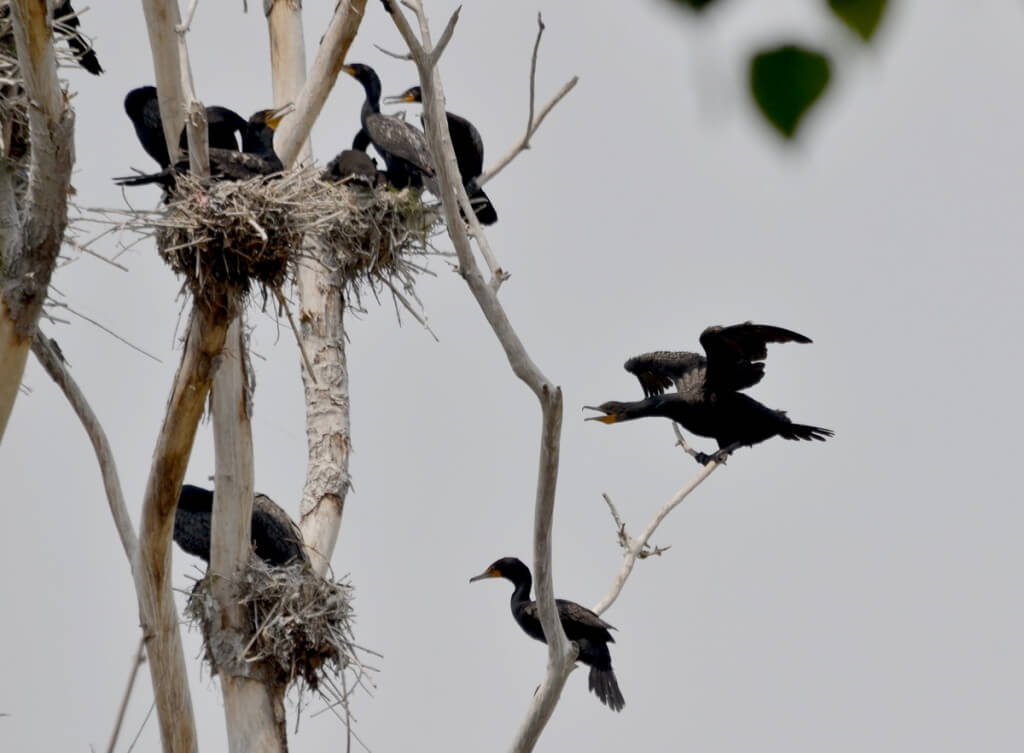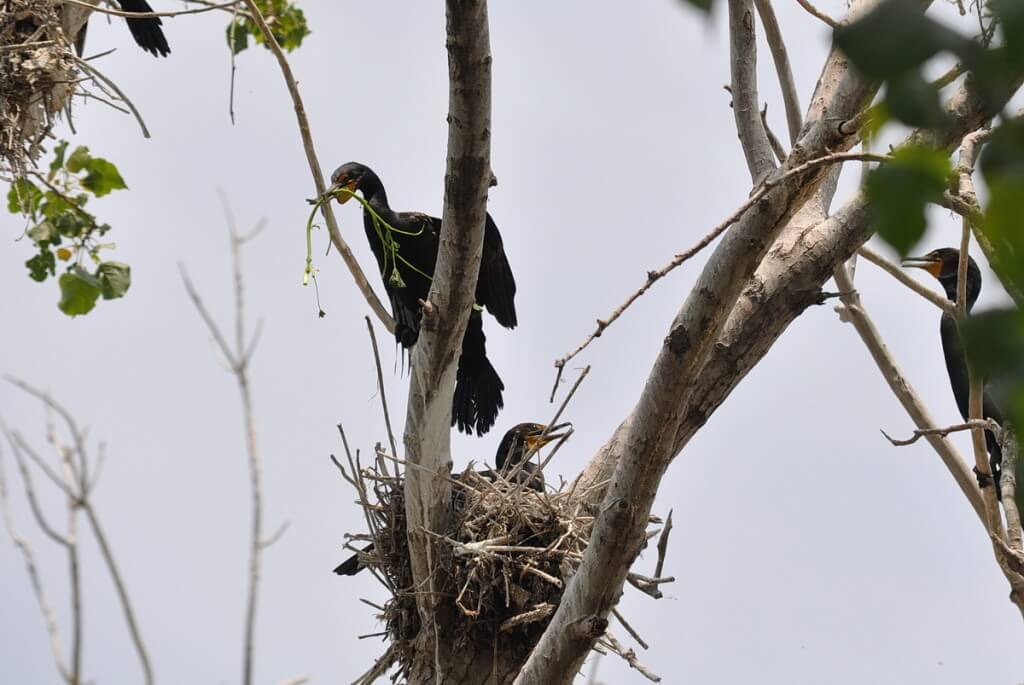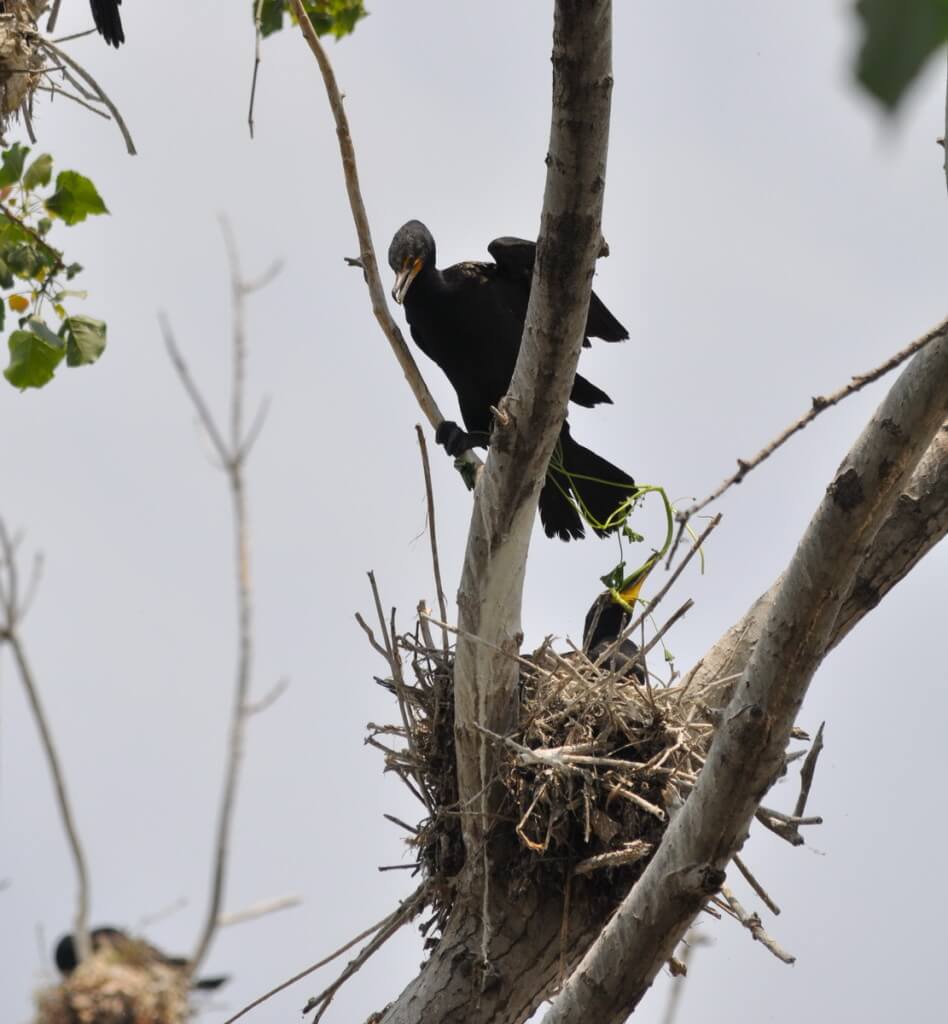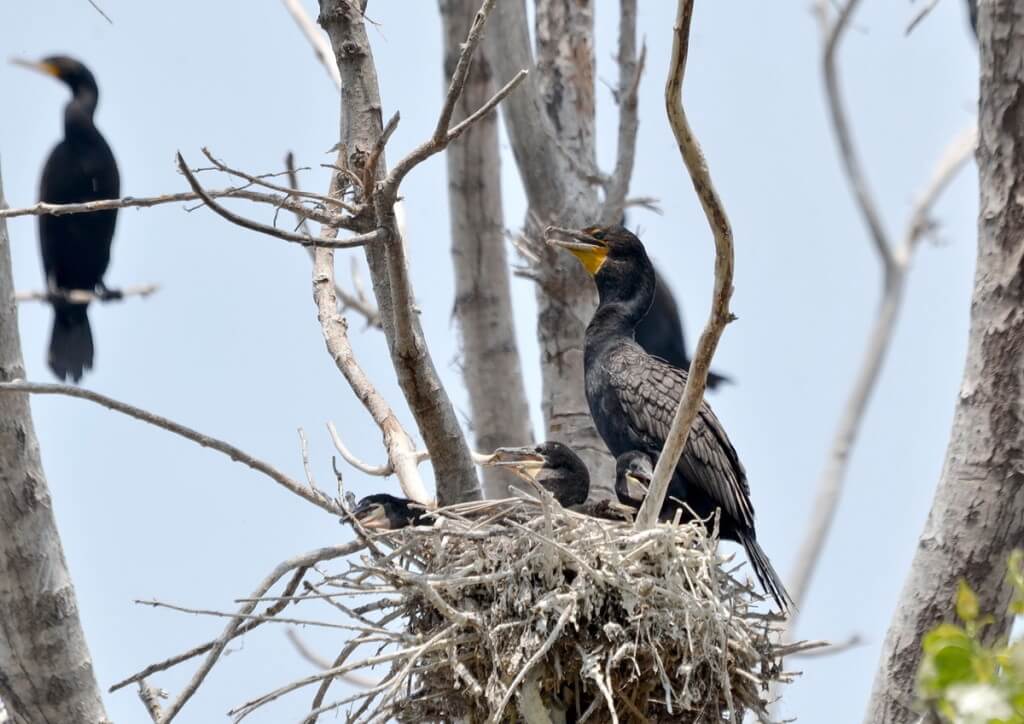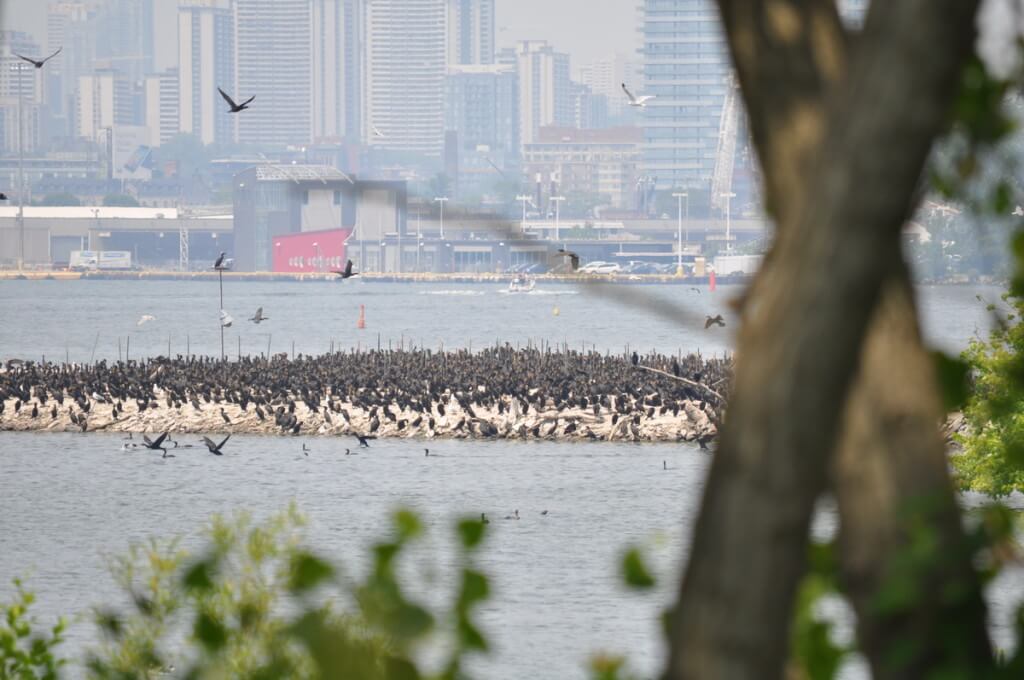Double-crested Cormorants nesting at Tommy Thompson Park
Tommy Thompson Park on the Leslie Street Spit in Toronto, Ontario, is an amazing destination for anyone who is interested in observing birds, especially during spring migration, but a visit in July was also rewarding for Bob and me when we discovered scores of Double-Crested Cormorants (Phalacrocorax auritus) with their young in the nests.
Bob and I had spent the early part of the day cycling along the eastern endikement in our search for shorebirds, took a spin around Lighthouse Point where we caught up with a crew that was monitoring the winds in relation to the sailing races of the Pan American Games, then after a picnic lunch, we ventured down a trail towards Embayment B.
Over the course of those hours, we noticed a constant stream of Double-crested Cormorants across the sky, either headed out to fish or on their return to the nesting colony.
We hopped off of our bikes where the trail came to an abrupt end signaled by a chain between two posts, but even from that location, we were able to see, first, a Black-crowned Night Heron at rest about 20 feet away,
and then, a little further off, our eyes drawn upwards by the raucous screeching and guttural croaks, dozens of Double-crested Cormorants decorating the trees with their glossy black bodies.
Tommy Thompson Park is host to the largest waterbird colony on the Great Lakes, and that colony is dominated by three species of birds, Double-crested Cormorants, Black-crowned Night Herons and Ring-billed Gulls. We have witnessed the large numbers of all three species on various occasions.
In the spring of 2013, our family hiked the length of Spine Road on Mother’s Day. It was staggering to see the trees on Peninsula C literally burdened under the weight of the Double-crested Cormorants that day. That year, it was estimated that almost 12,000 pairs of these birds nested at Tommy Thompson Park. We were firm believers in that fact!
But on this more recent day, we were intrigued to observe the behaviour of the adult Cormorants with their nestlings. Already, it was possible to detect the small patch of yellowy-orange bare skin on the young birds’ faces and throats. Although we were too far away to make out the adults’ stunning aquamarine eyes or the bright shade of blue on the insides of their mouths, it is these features, in combination with the green sheen on their backs, that makes them quite attractive birds.
Double-crested Cormorants either nest on the ground or in trees with both adults contributing to the construction. The males bring a selection of sticks and basically any bits of human debris to the females who incorporate everything into a rather bulky yet sturdy nest before lining it with grass or leaves. Those built in trees are about 1.5 feet deep, sufficient to accommodate the 3 or 4 nestlings as they grow from hatchlings to fledglings.
Bob and I observed that both adults were in attendance on many of the nests. It is normal for the male and female to both incubate the eggs, feed the young, and shelter them from the harmful rays of the sun with wings spread wide to provide shade. Owing to the almost exclusive diet of fish, the young birds grow quickly, but it still will take about 42 days from the time they hatch until they are ready to leave the nest.
Bob and I found it curious to witness one adult returning to the nest with a green plant grasped in its hooked beak.
It then offered the greenery to its mate, making us believe that this pair was still adding material to the nest in preparation for the laying of eggs. It seemed late in the season, given that it was mid-July, since Cormorants in the area of the Great Lakes usually breed no later than the end of June.
The Cormorant’s mate accepted the green stalk so we can only assume that this pair got off to a late start considering how unusually wet and cold this year’s spring season was.
One proud adult perched over two nestlings giving us a great look at the scalloped pattern on its back and wings. We also took note of the paler beaks and facial skin of the young who were waiting patiently to be fed again. They will soon fully resemble their prehistoric looking parents.
Bob and I did not linger long at the end of the trail and soon began pedaling hard up the hill to regain Spine Road. A short ways further on, a small opening in the wooded corridor gave us a window onto Peninsula D. The sandy point was a solid mass of Double-crested Cormorants that were obviously taking a break from their parental responsibility. It was hard to comprehend that number of birds coming together in one spot, but obviously Tommy Thompson Park provides the perfect habitat for these waterbirds. It was a sight to see!
Frame To Frame – Bob and Jean

